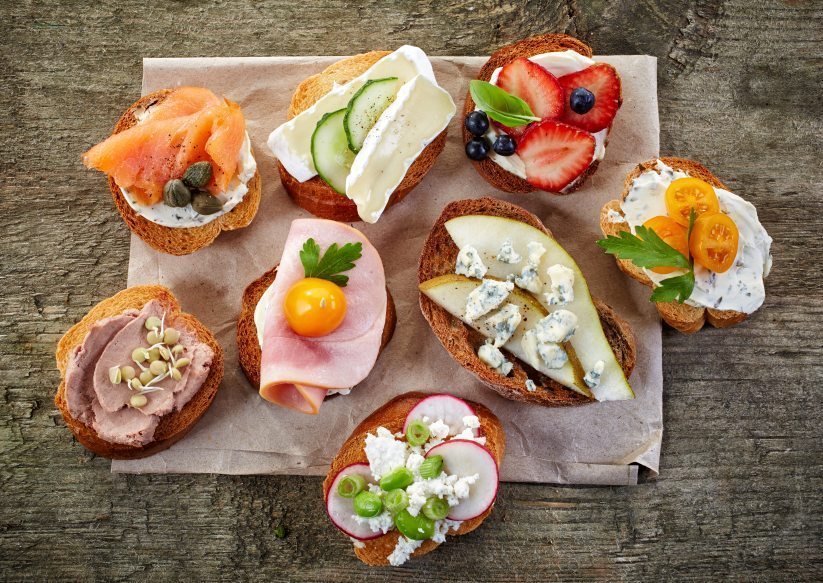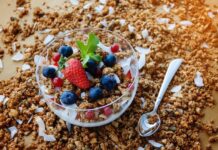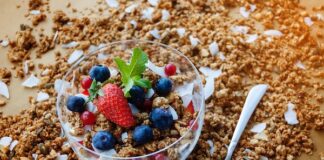
You hear it time and time again. Detox this, detox that, detox juice, detox cleanse.
The idea of detoxing and cleansing the body runs rampant, but what many people don’t really know is how to do it properly.
Oftentimes, juice cleanses are marketed as the ultimate way to detox the body, and while I certainly have nothing against juice on its own – I actually love it – the repercussions of subsisting solely on juice are much greater than you think. While you might feel great on day one of “the cleanse”, by day three if you’re not starving and craving every carb under the sun, you should definitely be classified as superhuman.
For the rest of us, being on a diet so restrictive typically leads to feelings of deprivation and an even worse “bounce-back”. Think: Dreaming of cheeseburgers and gorging on fries, oftentimes leading to a place where you feel worse than you did before.
Instead of going “all out”, when you’re looking to do what I prefer to call “resetting” – signifying a brand new start to your diet to get you to crave healthy, tasty foods in (key word here) abundance – it’s important to opt for whole foods that are filling and nutritious.
Need a starting point? Look below. These are the detox foods you should really be eating.
1. Greens & Vegetables
Greens should build the foundation of your healthy diet. Examples include leafy greens like kale, arugula, mesclun, and cos in addition to higher density vegetables such as cauliflower, asparagus, green beans, beets, brussels sprouts and broccoli. Try to fit these into each meal in order to not only feel fuller faster, but also get your daily dose of vitamins and minerals. Fun fact: The more nutrients your food has, the less hungry your body feels because it feels like its satisfied its daily requirements.
2. Fruits
Many people nix fruits because of the sugar, but what people fail to understand time and time again is that these are natural sugars which are then coupled with fiber. Thanks to the fiber in particular, the sugar is broken down which inhibits the insulin spike typically associated with fat storage. Fruits also can help satisfy your sweets craving so you are less inclined to opt for the even-higher-in-sugar dessert option. How I include fruit in my diet is mostly around my workouts (to provide a hefty supply of glucose to my depleted muscles or a boost in energy), in the mornings, and/or as a post-dinner dessert. My favorites are berries (raspberries, blueberries, blackberries and strawberries) for the antioxidants, bananas for a pre-workout kick and cherries or grapes if I’m really itching for dessert after dinner.
3. Lean Protein
If you eat meat, opt for lean sources at both lunch and dinner. Protein will help you feel fuller as well as quench your hunger. In addition, animal protein sources do not promote bloating in the majority of people, so you will be feeling leaner in no time. For lunch, grilled chicken over salad is a great go-to and salmon (which also has omega-3s) is certainly a favorite for dinner time. Another good option is lean ground turkey. While there is nothing inherently wrong with red meat, it’s harder to digest and higher in cholesterol, so opt for this as more of a treat instead of part of your daily diet. One more thing to note? Choose organic and grass fed or cage free. This rids the animal of potential pesticides and chemicals that may also linger in your food!
4. Alternative Protein Sources
Not a meat eater or looking to cut back? There are plenty of alternative protein sources. Beans are a great option because not only does it have muscle-building protein, but is also a filling carb. If you can tolerate soy well, tofu and tempeh is another great option, but make sure you opt for organic as, I would say, the majority of soy is genetically modified. Need more options? Quinoa, nuts, seeds, lentils and sea vegetables (seaweed) also fit the bill.
5. Superfoods
Superfoods may seem like a gimmick to you, but there are certain foods that are really worth having in your diet. My all-time favorites are hemp seeds, chia seeds and psyllium husk powder. Hemp and chia are filled with healthy fats and protein, while psyllium husk is a fiber that helps you digest and “process” your foods at seemingly lightening speed. I typically mix in the seeds in my morning bowl of oatmeal, yogurt or smoothie, while psyllium husk is best kept for smoothies.
6. Complex Carbs
When I’m resetting, I ditch bread – even whole wheat or whole grain. Maybe it’s because I love bread too much, but I find my body feels less “heavy” without and I’m less inclined to eat/think about it if I forgo it altogether. That being said, opting for brown rice and quinoa are better for energy and satiety.
7. Healthy Fats
While fat used to be every dieter’s arch nemesis in the 90’s when fad diets were questionably abundant, research now shows that overt fats are essential for healthy function, satiety and even looking good. Why? The omega 3s and 6s help make hair shinier, nails stronger and skin more vibrant. No wonder avocado face masks are still uber popular! Some of my favorite options are: almond butter, tahini, avocado, cashews, walnuts, brazil nuts, olive oil and hemp seed oil. While I typically have the nuts alone as a snack, almond butter or tahini make for a great breakfast topping, avocado is basically essential in salads, and the oils are great for drizzling. For stir fries, opt for coconut oil.
8. Fermented Foods
This is another secret for a happy digestive system and glowing skin. Sauerkraut, kimchi, kombucha and kefir promote healthy bacteria in the gut which combats the bad bacteria in addition to good digestion. If you’ve ever seen facial mapping before, you will know that your gastrointestinal system directly affects potential breakouts on your face, so by eating these flavorful foods, you’ll be packing in two benefits in one. My favorite thing to do is top my warm macrobiotic bowls ( brown rice, sautéed kale, seaweed, beans, avocado, tahini) with kimchi for a more diverse taste.
9. Water
Finally, remember to drink water throughout the day. I choose to shoot for at least 3 liters a day. It may seem counterintuitive if you’re combatting the bloat to drink more fluid, but drinking more water means releasing more water throughout the day and cleansing the lymphatic system. In addition, oftentimes people feel hungrier than they actually are because they’re actually thirtsy. Eat less, bloat less. There is no reason you shouldn’t be drinking throughout the day. Take a water bottle to work and the gym for all-day hydration.
So you see, detoxing and “cleansing” are not as difficult or restrictive as you think. As a matter of fact, you can feel full and satisfied. Check in tomorrow for an example eating plan!
For more Food & Fitness features, check out our articles here.
What detox foods are your favorites?









![Daily Bite [Make]: Philly Cheesesteak Stuffed Bell Peppers](https://dashofwellness.com/wp-content/uploads/2013/01/Philly-Cheesesteak-Stuffed-Pepper-Daily-Bite-1-100x70.png)

[…] you check out our website regularly, you probably read our take on what you can really eat on a cleanse – and no, it’s not just juices and […]